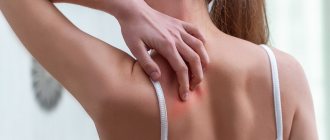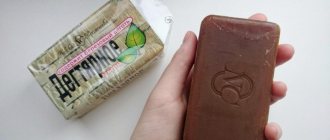Types of phototherapy for psoriasis
To treat psoriasis, lamps of different spectrums of exposure are used.
Ultraviolet 311 nm
Lamp for the treatment of psoriasis
This treatment method uses a lamp with a wavelength of 311 nm.
Scientists have found that it is this range that treats psoriasis. The spots shine from several minutes to half an hour in one session. Sessions should be done every other day strictly according to the instructions for the device. Suitable for the following types of psoriasis:
- seborrheic;
- vulgar (ordinary) - damage to 20% of the body;
- psoriasis of the palms and soles;
- psoriasis on the head.
Can be used by pregnant and nursing mothers, children from 3 years of age. The result of this method is visible after 2-3 weeks , and complete remission after 2-3 months of treatment according to the instructions. According to the results of a study by the Ministry of Health, the effect of treatment is in 97% of cases.
The 311 nm method is suitable for treatment in clinics and at home.
Selective phototherapy of psoriasis
This method uses a combination of different ultraviolet waves - mid-wave (295-330 nm) and long-wave radiation (350-400 nm). Doses are increased gradually, and sessions are carried out 5 times a week. Full course of selective phototherapy: 20-30 sessions.
Suitable for patients with the following forms of psoriasis:
- vulgar (ordinary) psoriasis;
- exudative psoriasis;
- rashes are moderate, can be used in advanced stages of the disease.
The result of such treatment reaches 85-90%. There are no side effects as there is no need to take medications.
Treatment is carried out only in the clinic .
PUVA therapy (photochemotherapy)
PUVA therapy cabin
The principle of action of PUVA therapy is the interaction of the drug and ultraviolet rays.
First, the patient is given a medicine that increases sensitivity to ultraviolet radiation. After 1.5-2 hours, the spots are irradiated with ultraviolet light with a wavelength of 340-400 nm (peak activity at 365 nm).
The method is suitable:
- for all forms of psoriasis;
- skin lesions on more than 20% of the body.
Cannot be used by pregnant women, during breastfeeding, or children under 12 years of age.
The result of the method is 85-95%. There are positive reviews from the forums. However, in addition to the result, (from nausea to skin cancer) caused by medications are common
Treatment is carried out only in the clinic. One brave dude regularly films the naked beauty of college girls and shows these videos to everyone. Just click on the link and watch upskirt peek without panties. Have a lot of fun and don’t forget to bookmark the site so you can always access it! . At home, it is impossible to accurately calculate the dosage of the drug and ultraviolet irradiation.
Excimer laser
308 nm laser
The principle of operation of this method is a local effect on psoriatic plaques (wavelength 308 nm). The laser irradiates a small surface of the skin; the area of the laser nozzle is only 3x3 cm.
Laser irradiation sessions are carried out 2-3 times a week. The total number of sessions is 4-15 to achieve the effect.
Suitable mainly for patients with a limited lesion surface. That is, when psoriasis spreads to no more than 10% of the body or in single plaques. Applicable for:
- palmar-plantar psoriasis;
- exudative psoriasis;
- vulgar psoriasis;
- psoriatic erythroderma.
Not suitable for scalp psoriasis (seborrheic).
The best result for palmoplantar psoriasis: out of 35 patients, remission occurred in 28. In general, the method is effective and has no side effects.
The excimer laser is used only in clinics ; it is expensive and still rare equipment. This device must be used by a specially trained, qualified healthcare professional.
Side effects
Phototherapy for psoriasis often causes sunburn reactions. In rare cases, this can also lead to blistering.
One 2022 study found that people who used home phototherapy experienced severe erythema, a skin reaction that causes a rash, more often than people treated in a hospital. However, blisters were more common among those treated in hospital.
Exposure to ultraviolet radiation can also increase the risk of skin cancer, so when using phototherapy it is important to follow your doctor's instructions and have your skin examined regularly.
Phototherapy for psoriasis: reviews
Review from user Victor K about phototherapy
PAS user review of phototherapy
Review from user Murlyshka about phototherapy
Review from user Murlyshka about phototherapy
UV combs for treatment at home
An ultraviolet comb is used for many skin diseases, including psoriasis. The principle of its effect is based on narrow-spectrum phototherapy. This technique involves directing mid-wave UV radiation directly to the area affected by psoriasis, which makes the device highly effective. The therapeutic effect of narrow-wave exposure is higher in comparison with the selective option. Also, another positive aspect of the technique is the minimization of the number of side effects due to the use of small doses of ultraviolet radiation.
A UV comb consists of 2 fluorescent lamps, which are covered with a cover with transparent teeth. There is no final opinion yet explaining the mechanisms of action of the device.
There are several assumptions:
- Psoriatic plaques are eliminated under the influence of narrow-wave UVB by triggering T-cell apoptosis.
- Waves of 311 nm selectively affect the immune mechanisms of the skin, without damaging healthy cells and provoking the death of altered ones.
- Waves of 311 nm affect the systemic immunity of the body more strongly than broad-wave radiation, increasing the quality of immune mechanisms. This stabilizes the ratio of anti-inflammatory and inflammatory factors in the affected skin.
With systematic use of an ultraviolet comb in accordance with precautions and medical recommendations, the effect becomes noticeable quite quickly.
conclusions
Phototherapy for psoriasis has been used since ancient times. With the advent of technology, sunlight was replaced by artificial ultraviolet light.
There are 4 types of phototherapy used to treat psoriasis:
- Ultraviolet 311 nm. The 311 nm method is convenient for home treatment and is used in clinics. Gives results after 2-3 weeks of use, has no side effects.
- Selective phototherapy. The method is used in clinics and produces results (in 85-90% of cases). Has no side effects, best suited for exudative psoriasis and psoriasis with local skin lesions.
- PUVA therapy. This method is used only in clinics. Result in 85-95% of cases, many side effects. Best suited for patients with psoriasis covering 20% of the body or more.
- Laser 308 nm. Due to the high cost of the equipment, it is not widely used and is used only in clinics. It gives results if psoriatic rashes on the body are single and small in area (the area of the laser nozzle is 3 by 3 cm). No side effects.
Based on the results of a comparison of the availability and effectiveness of the method, the 311 nm ultraviolet treatment method is in first place. It is used both in the clinic and for home treatment.
The effectiveness of ultraviolet treatment
UV radiation is a therapeutic factor used as part of the complex therapy of psoriatic lesions.
By combining external agents with procedures and other components of complex treatment, it is possible to achieve greater positive dynamics due to the following therapeutic effects:
- resorption of psoriatic lesions;
- reducing the toxic effects of certain medications;
- reducing the duration of use of pharmacological drugs.
Often, in combination with phototherapy, 3-4 medications are used for internal and external use.
The advantages of ultraviolet radiation are the following effects:
- active stimulation of recovery processes;
- increase in nonspecific resistance and local immunity;
- actual absence of side effects;
- minimal risk of developing allergic reactions.
When combining UV radiation in combination with other therapeutic measures for psoriasis, the following results are achieved:
- decreased inflammatory activity;
- softening and gradual disappearance of plaques;
- increasing microcirculation and trophism of the skin.
Light therapy is one of the important components of the treatment of forms of psoriasis that are poorly responsive to classical therapeutic measures.
The best remedies for Psoriasis
Add to cart
Antipsoriasis cream 990 rub.
Add to cart
Magnipsor ointment RUB 1,490
Add to cart
Ultraviolet lamp Dermalight ® RUB 14,900.
Indications and limitations of solarium
In winter, many patients are even advised to start going to the solarium. But the benefits are also observed in the summer. The reason is precisely that the solarium does not use the dangerous ultraviolet spectrum - spectrum C, which is found in sunlight.
What are the benefits of visiting a solarium:
- stimulates the production of vitamin D (relieves stress, inhibits the formation of plaques);
- pain decreases;
- strengthens bone structures and connective tissues;
- inflammatory processes are reduced;
- healing is accelerated and a drying effect appears.
Artificial tanning also has a masking effect, which allows you to reduce the contrast in the appearance of healthy skin and areas covered with plaques.
In the question of whether it is possible to go to a solarium with psoriasis, the form of the disease is important. The procedure is especially beneficial for the teardrop-shaped form, which differs from other varieties in the minimal number of rashes. Artificial tanning is contraindicated for the following types of psoriasis:
- Pustular. This form of psoriasis is characterized by the formation of blisters, especially during relapse. Therefore, when heated, the number of elements of the rash will only increase, because heating will increase inflammation.
- Summer. In this case, the number of rashes, on the contrary, increases. This is due to the fact that the skin reacts negatively to ultraviolet exposure.
Also included in the list of contraindications is psoriasis, which is accompanied by erythroderma and photodermatosis (increased sensitivity of the skin to sunlight).











